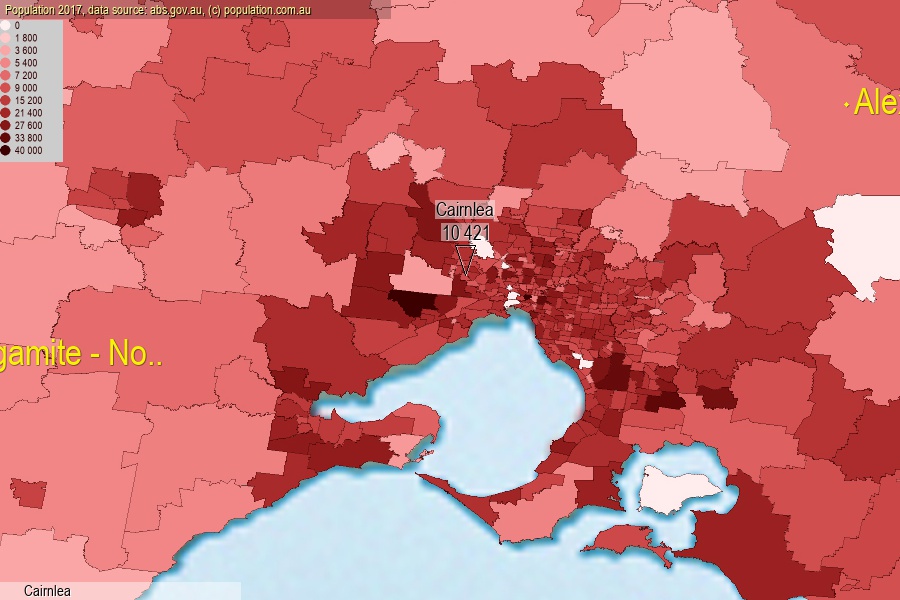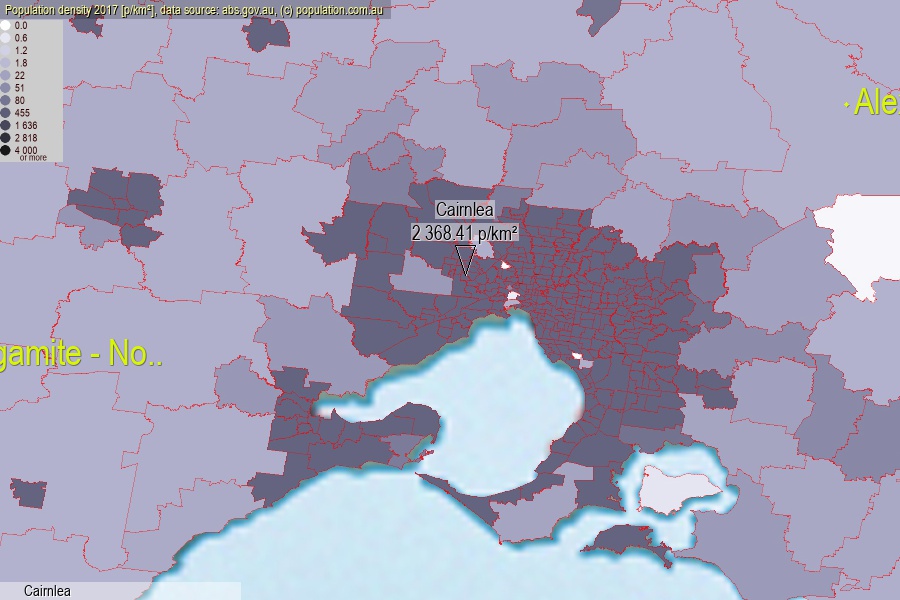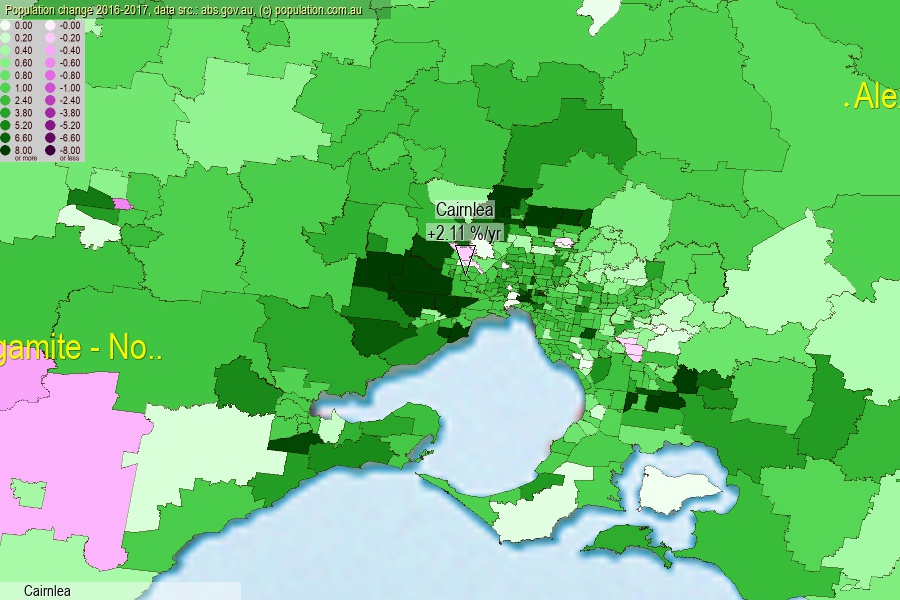 population.com.au
population.com.auLast official estimated population of Cairnlea (as Statistical Area Level 2) was 10 421 people (on 2017-06-30)[2]. This was 0.04% of total Australian population and 0.162% of VIC population. Area of Cairnlea is 4.40 km², in this year population density was 2 368.41 p/km² . If population growth rate would be same as in period 2016-2017 (+2.11%/yr), Cairnlea population in 2025 would be 12 312. [0]



Click to enlarge. Cairnlea is located in the center of the images.
Population [people], population density [p./km²] and population change [%/year] [2]
View borders » (new window) [4]
[1991-1992] 0.00 %/Yr.
[1992-1993] 0.00 %/Yr.
[1993-1994] 0.00 %/Yr.
[1994-1995] 0.00 %/Yr.
[1995-1996] 0.00 %/Yr.
[1996-1997] +340.00 %/Yr.
[1997-1998] +79.55 %/Yr.
[1998-1999] +44.94 %/Yr.
[1999-2000] +29.26 %/Yr.
[2000-2001] +23.65 %/Yr.
[2001-2002] +209.56 %/Yr.
[2002-2003] +105.21 %/Yr.
[2003-2004] +60.95 %/Yr.
[2004-2005] +40.43 %/Yr.
[2005-2006] +20.30 %/Yr.
[2006-2007] +16.45 %/Yr.
[2007-2008] +10.31 %/Yr.
[2008-2009] +8.21 %/Yr.
[2009-2010] +3.54 %/Yr.
[2010-2011] +2.33 %/Yr.
[2011-2012] +2.57 %/Yr.
[2012-2013] +1.55 %/Yr.
[2013-2014] +1.64 %/Yr.
[2014-2015] +1.86 %/Yr.
[2015-2016] +1.65 %/Yr.
[2016-2017] +2.11 %/Yr.
[0] Calculated with linear interpolation from officially estimated population
[1] Read more about SA2 and Australian Statistical Geography Standard (ASGS) on abs.gov.au
[2] Population data from Australian Bureau of Statistics (Population and density: 2017; change: 2016-2017)
[3] Digital Boundaries: Australian Statistical Geography Standard (ASGS) 2016.
[4] Border coordinates are simplifyed using Ramer-Douglas-Peucker algorithm.